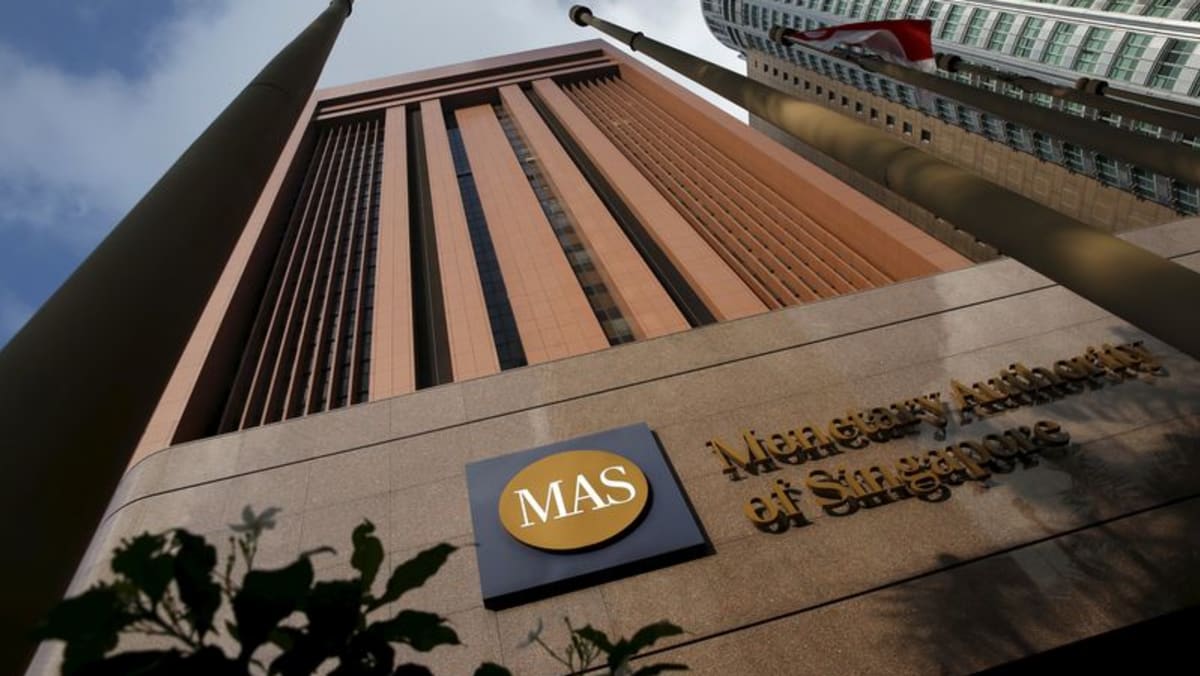SINGAPORE: The Monetary Authority of Singapore (MAS) kept its exchange rate-based monetary policy unchanged on Wednesday (Jul 30) after easing twice earlier this year.
Since the last monetary policy statement, global economic growth has been more resilient than earlier anticipated, it said.
The monetary policy statement said MAS will maintain the prevailing rate of appreciation of the Singapore dollar nominal effective exchange rate (S$NEER) policy band.
“There will be no change to its width and the level at which it is centred,” the central bank said.
It noted the two policy moves earlier this year and said it is in “an appropriate position to respond to risks to medium-term price stability”.
MAS said global manufacturing production and trade remained steady since April, supported by the front-loading of orders and continued artificial intelligence related investments.
The momentum should moderate over the rest of the year as front-loading activity dissipates, demand slows because of policy uncertainty and previously delayed tariffs are implemented.
“However, the risk of a sharp step-down in global growth in the near term has receded along with the general de-escalation in trade tensions as well as more benign financial conditions since April,” said MAS.
It also pointed to the Ministry of Trade and Industry’s advance estimates for the second quarter, and said growth momentum was stronger than expected.
Gross domestic product (GDP) growth is projected to moderate in the second half of the year, and prospects for the Singapore economy remain subject to “significant uncertainty, especially in 2026”, said the central bank.
Changes in effective tariff rates worldwide could impact the performance of externally oriented sectors, and renewed trade conflict or financial or geopolitical shocks would exacerbate the drags, and weigh on Singapore’s economic growth, MAS said.
It said underlying inflationary pressures should remain contained in the near term as well. “Given the uncertainties, MAS will closely monitor global and economic developments, and remain vigilant to risks to inflation and growth.”
Economists polled by Reuters were split on whether MAS would loosen monetary policy or leave it unchanged. Six expected the former and six expected the latter.
The central bank eased monetary policy in January and April this year after keeping it unchanged for nearly five years.
MAS manages monetary policy through the exchange rate instead of interest rates. It lets the Singapore dollar strengthen or weaken against currencies of the country’s main trading partners within an undisclosed band.
It can change the slope, mid-point or width of the band.
INFLATION RISKS
Core inflation, which excludes accommodation and private transport costs, remained stable in the second quarter at 0.6 per cent from a year ago. MAS said hikes in administrative prices were offset by falling prices for most other goods and services.
The pace of increases was subdued because of modest imported and domestic cost pressures and weak consumer spending for some segments.
Inflationary pressures should remain contained, with ample global oil supplies and falling regional producer prices controlling imported costs. Lower nominal wage growth and continuing increases in labour productivity will also dampen labour costs.
MAS core inflation is expected to edge up slightly starting from the later part of 2025 as the effects of the global oil price decline and Singapore’s enhanced healthcare subsidies, which were introduced in late 2024, taper off.
For the full year, core inflation and headline inflation are forecast to average 0.5 per cent to 1.5 per cent.
But the outlook is subject to both upside and downside risks. Geopolitical shocks could cause imported energy and shipping costs to jump, while core inflation could stay lower for longer if global and domestic growth is more hesitant and weaker than anticipated.
